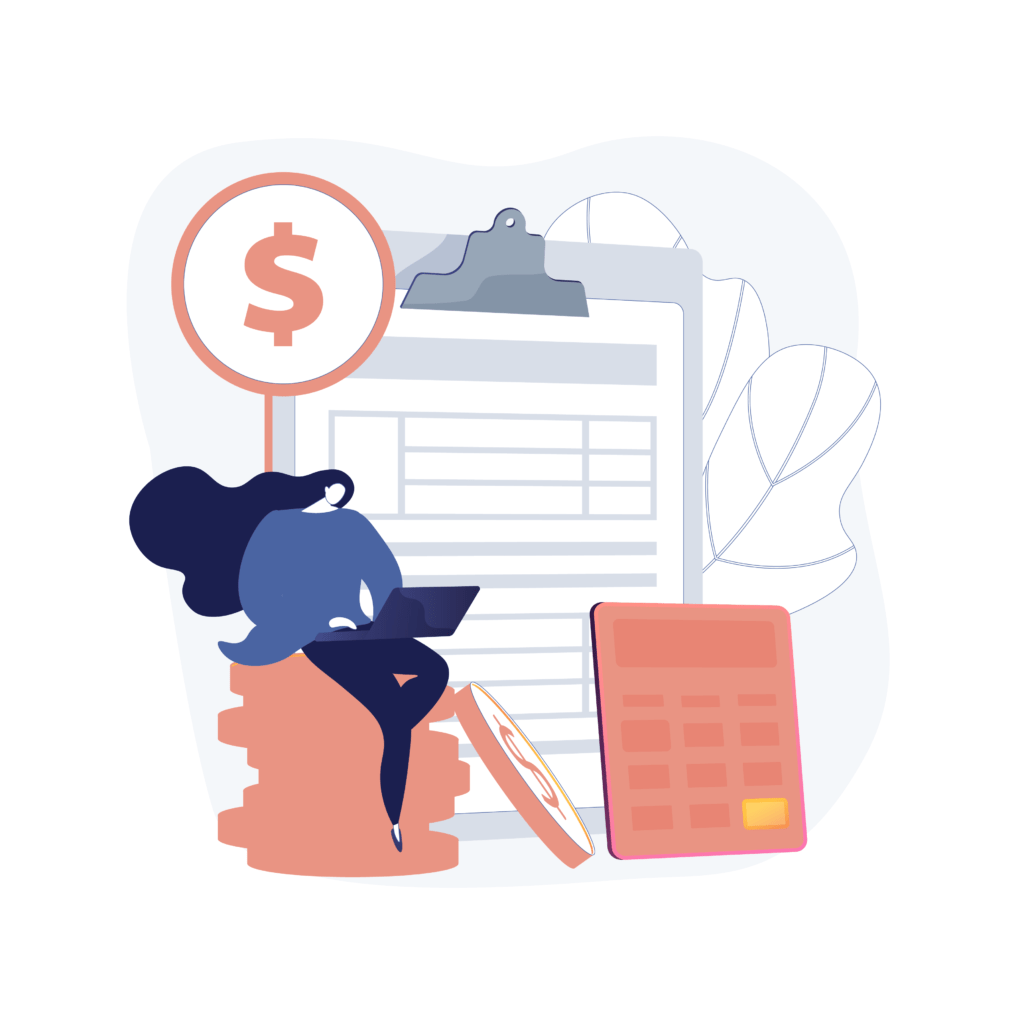After cash flow vs profit, the most important financial terms people often confuse are top line vs bottom line. Both are figures on the income statement for your company, but they tell you quite different things. As they are two of the most essential figures, it’s crucial you understand what each means and how they differ from one other.
What Is an Income Statement?
To find your top and bottom line figures, you first need to know what we mean by an income statement. Also called a profit and loss (P&L) statement, it is the document that shows your revenue and expenses.
Your business income statement is one of the most important documents for reporting on your financial situation over a particular period. The others are your balance sheet and cash flow statement.
Top Line Definition
Top line relates to the gross sales and revenue at your company. It is an indication of your performance in the market as a whole and of how well you compare to your competitors. It shows you by how much you increased your revenue through core business activities. The name is derived from the fact that the number appears at the top of the income statement.
What Are Gross Sales?
To understand the definition of top line, it’s necessary to be clear what gross sales means as well.
You calculate gross sales by adding all the sales on your invoices and revenue transactions. Gross sales is the total amount without taking into account related costs — like cost of goods sold (COGS), taxes, operating costs, and other expenses. Deducting these gives you net sales.
How to Increase Your Top Line
Since the top line is about higher sales and revenue, you can increase it by selling more products and services. This could involve improving your advertising and marketing efforts, but it could also require raising prices or simply ramping up production.
Other options are to add new product lines or increase your service offerings to have more to sell to customers. Finally, you could enhance the quality of your products or services to increase client satisfaction. This will result in fewer returns and a better image for you brand, attracting more customers.
If you’re able, you could also increase your top line by acquiring another company. With the right strategic decision, an acquisition could increase your market share — which tends to mean growth of the top line.
Bottom Line Definition
The bottom line has different implications for investors and business owners. Therefore, it’s important to be clear of the bottom line definition for business. Be aware that the bottom line also goes by net earnings, net profits, and net income. Plus, it’s the derivative of phrases like “improving your bottom line.”
As you’ve surely guessed, the bottom line is the lower figure on your income statement. It shows your income after deducting expenses from revenue. Such expenses may include:
- Administrative costs and fixed overhead
- Interest on loans and other debts
- Income taxes — federal, state, and local
- Depreciation and amortization
- General expenses, like labor, materials, and other costs to sell goods
You calculate the bottom by deducting these expenses from your top line. The calculation looks like this:
Top line – Total expenses = Bottom line
The result is an indication of your capability to create products and services in a way that generates enough gross profit to cover expenses while still providing a decent net profit.
How to Increase Your Bottom Line
Of course, increasing the top line without changing anything else will lead to increases in the bottom line to some extent. However, it’s also necessary to take direct action to grow your bottom line. There are several ways you can do this.
Increasing your bottom line is mainly about improving efficiency. Therefore, it means finding less expensive ways to produce your offerings. You may need to seek new suppliers who can provide you with materials for a lower cost, increase productivity in the manufacturing process, or better use your tax benefits. You could also look for other ways to reduce operating expenses, such as cutting wages and benefits to workers.
A second thing to consider is other sources of income. Selling property or equipment can improve your bottom line. You can also collect income from investments, interest, and rentals and through collocation fees.
Using Net Income
You can use income generated by the bottom line in multiple ways — typically, the executives at your company choose which. Public companies can incentivize stockholders by issuing payments as dividends. They can also repurchase their own stock to retire equity.
Alternatively, companies may choose to designate their bottom line earnings to improve their company. As a few examples, this could involve developing new products, expanding current locations, or opening a new branch.
Top Line vs Bottom Line
There are several similarities between the top line and the bottom line. For instance, investors and analysts use both to look for changes to assess a company’s financial health. Businesses themselves use the figures to gauge the success of their strategies. It’s common to compare one quarter to the next as well as one year to another.

Differences Between Top Line and Bottom Line
Despite their similarities, top line and bottom line are quite different measures and have distinct purposes.
The top line just shows how well the company is generating sales and revenue. The bottom line, in contrast, shows the company’s efficiency. It expresses well how you are managing operating costs and helps you reflect on where you are directing your spending.
Just looking at the top line without looking at the bottom line means you are neglecting to consider operating efficiencies — and this can have a major impact. However, it’s no good only looking at the bottom line either. Revenue can tell you if you should invest more in activities like marketing, advertising, product development, or even hiring.
Usage is only one difference: there’s also a variation in how the figures are reported. Your income statement does not carry over the bottom line from one period to the next. Instead, you transfer the bottom line to your retained earnings account at the end of the accounting year, after closing all revenue and expense accounts.
Top Line vs Bottom Line Growth
Growth in the top line means your company is seeing an increase either in gross sales, revenue, or both. This is called generating top-line growth.
Bottom line growth, however, shows that your company is better at managing costs, particularly operational expenses. A decrease in growth in the bottom line suggests your income has dropped or your expenditures have increased since the previous period.
It’s possible to see similar growth in both the top line and bottom line, but this is not always the case. For instance, increased production could mean you see initial growth in the top line, but you may see no change in the bottom line until you improve processes.
Alternatively, if you’ve just improved operations without making any impact on sales, you may see growth in the bottom line but no change to the top line. You may also increase just the bottom line if you reduce input prices (costs related to producing goods or services) or enact cost control measures.
Profitable companies do typically see growth in both the top line and bottom line simultaneously. Nonetheless, there are some circumstances when there’s likely to be a difference in growth between the two. In fact, it’s often well-established corporations that see a decrease in the top line without a corresponding drop in growth of the bottom line. This is often the case when external factors mean sales drop. Long-established companies are able to reduce expenses to prevent a decrease in top line growth from impacting the bottom line. This is particularly common during economic recessions.
A recent example of this is Apple in 2019, when iPhone sales slowed more than expected. This didn’t hurt the bottom line, as Apple was able to find ways to cut costs. Situations like this often occur when companies have mature products or limited new offerings, which leads to fewer year-over-year sales.
Causes for Concern in Top and Bottom Line Growth
You want your earnings growth (the bottom line) and your revenue growth (the top line) to be close to 1:1. A ratio that is far from this for an extended period of time — typically five to seven years — is a cause for concern. This suggests that your strategy for generating profit growth in the future is no longer working.
Why is this the case? It’s rare that companies are able to keep raising prices more than inflation each year. Therefore, even if you maximize efficiency, there will become a point when you’re unable to increase your profit further. Profit growth that is slower than sales growth is equally problematic.
The Takeaway
Although new business owners often confuse the two, top line and bottom line are far from interchangeable terms. Whereas both are critical for understanding the financial health of your company, they have quite different purposes. Understanding the definition and implication of each is crucial for making the right business decisions.
This is just one example of how bookkeeping is more complicated than it may first appear. To avoid errors, it makes sense to outsource your bookkeeping. Receive the support you need with a virtual assistant from MYVA360. Schedule a consultation to receive a 10-percent discount.





